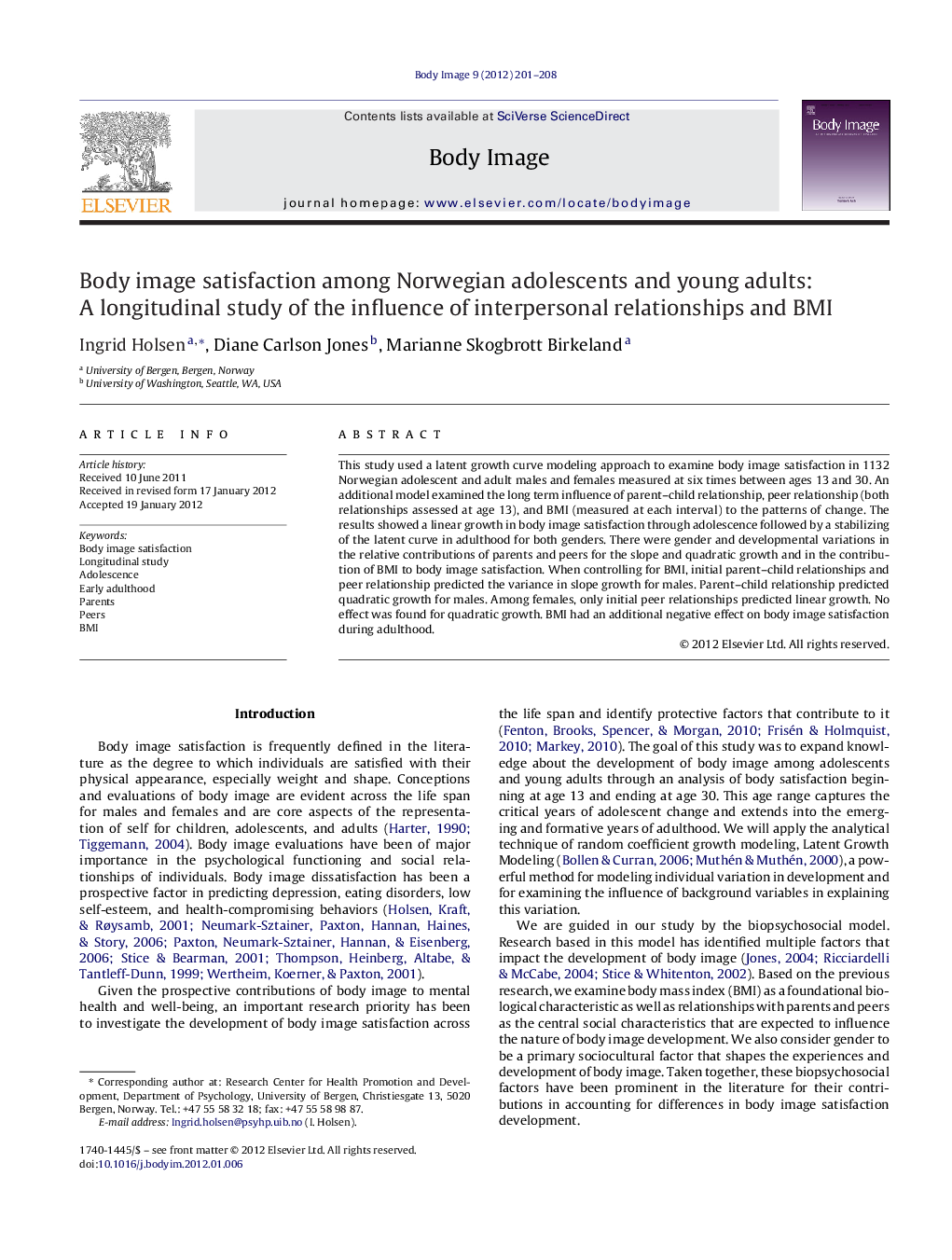| Article ID | Journal | Published Year | Pages | File Type |
|---|---|---|---|---|
| 903122 | Body Image | 2012 | 8 Pages |
This study used a latent growth curve modeling approach to examine body image satisfaction in 1132 Norwegian adolescent and adult males and females measured at six times between ages 13 and 30. An additional model examined the long term influence of parent–child relationship, peer relationship (both relationships assessed at age 13), and BMI (measured at each interval) to the patterns of change. The results showed a linear growth in body image satisfaction through adolescence followed by a stabilizing of the latent curve in adulthood for both genders. There were gender and developmental variations in the relative contributions of parents and peers for the slope and quadratic growth and in the contribution of BMI to body image satisfaction. When controlling for BMI, initial parent–child relationships and peer relationship predicted the variance in slope growth for males. Parent–child relationship predicted quadratic growth for males. Among females, only initial peer relationships predicted linear growth. No effect was found for quadratic growth. BMI had an additional negative effect on body image satisfaction during adulthood.
► Linear and quadratic growth in body image satisfaction for males and females at six measurements between ages 13 and 30. ► Persistent long-term effect of early relationships with parents and peers in predicting the variance in linear growth in body image during adolescence. ► Gender variation in the relative contribution of parents and peers, and BMI. ► BMI had an additional effect on body image especially during the adulthood years.
